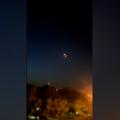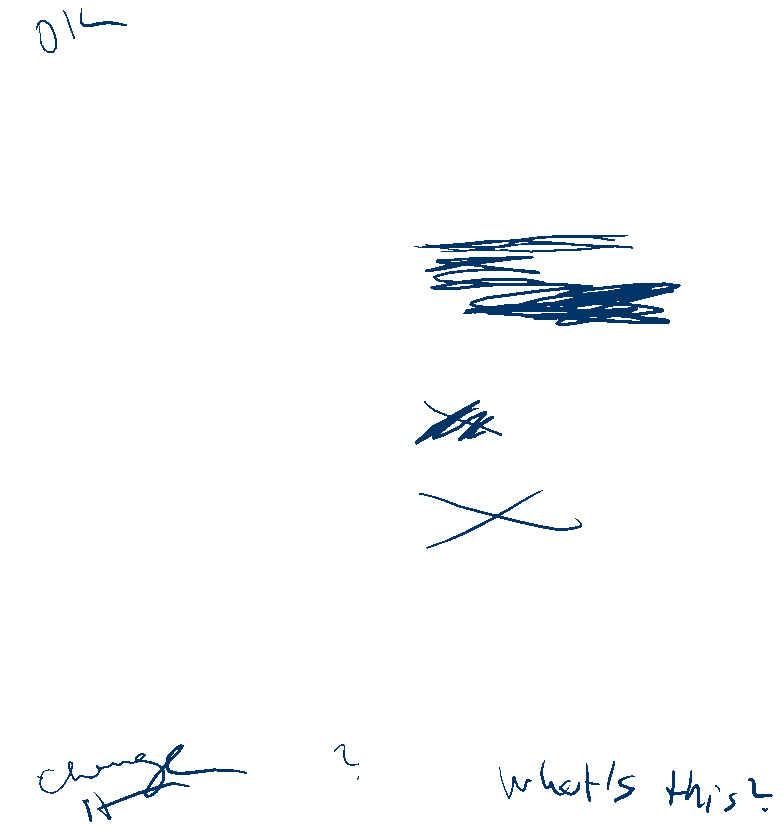Our live coverage of Russia's war in Ukraine has moved here.
May 28, 2023 Russia-Ukraine news
By Sophie Tanno, Thom Poole, Mike Hayes and Matt Meyer, CNN
Iran has a direct route for sending Russia weapons, like the drones used in the assault on Kyiv
From CNN's Lauren Kent and Salma Abdelaziz
The Caspian Sea provides a direct path between Iran and Russia – and it is increasingly busy with cargo traffic, including suspected weapons transfers from Tehran to Moscow.
As cooperation between the two countries deepens, the Caspian Sea route is being used to move drones, bullets and mortar shells that the Russian government has purchased from the Iranian regime to bolster its war effort in Ukraine, according to experts. Tracking data shows that vessels in the region are increasingly going “dark” – suggesting growing intent to obfuscate the movement of goods.
Last year, data from Lloyd’s List Intelligence revealed a September spike in the number of gaps in vessels tracking data in the Caspian. That’s shortly after the United States and Ukrainian governments say Moscow acquired drones from Tehran last summer.
Russia’s use of Iranian drones increased in the fall, including against critical energy infrastructure in Ukraine. Early Sunday, Moscow launched its largest assault yet using the Iranian-made drones, according to Ukraine.
Kyiv vowed consequences for Iran's actions, but analysts say Ukraine’s Western allies have little power to stop the arms deliveries.
“There is no risk to Iranian exports in the Caspian Sea because of the bordering countries – they don’t have the capability or motive to interdict in these sorts of exchanges,” said Martin Kelly, lead intelligence analyst at security company EOS Risk Group. Azerbaijan, Turkmenistan and Kazakhstan, all former Soviet republics, are the other nations with ports on the Caspian Sea.
It’s a “perfect environment for this trade to go unopposed,” Kelly added.
More background: A huge wave of Russian attacks using Iranian-made Shahed drones targeted Kyiv early Sunday, according to Ukrainian officials. Ukraine said it shot down most of the drones, but one person died in the onslaught.
These Shahed-series drones – the Shahed-129 and Shahed-191 – are unmanned aerial vehicles capable of carrying precision-guided munitions, and can also be used for surveillance.
Iran appears to be modifying the drones so that their explosive warheads can inflict maximum damage on infrastructure targets inside Ukraine, according to an investigative report obtained exclusively by CNN earlier this year.
Read more about Russia and Iran's weapons partnership here.
Russia launched dozens of Iranian-made drones at Ukraine overnight. Kyiv claims it knocked down all but one
The Ukrainian military has updated its tally from the drone attacks launched by Russia early Sunday, saying the "massive attack" using Shahed unmanned aerial vehicles consisted of 59 drones, 58 of which it shot down, according to a statement.
Shahed drones are manufactured in Iran and have frequently been deployed by Russian forces in Ukraine. Kyiv warned Tehran Sunday there would be "consequences" for supplying the aerial arsenal to Moscow.
Ukrainian President Volodymyr Zelensky said in his daily address Sunday that the overnight attack ranked as “one of the largest attacks by Shahed drones.”
“Almost all of them were shot down. Unfortunately, there are hits in Zhytomyr region,” he added, referring to a northern region bordering Kyiv.
It was not immediately clear if Zelensky had not received updated statistics from his military at the time he spoke, or if he was referring to an additional Russian attack when he reported multiple hits in Zhytomyr.
Zelensky said the "most powerful” drone attack was directed against the Kyiv region.
“Thirty-six drones were shot down within the city of Kyiv and the region. This is how Russia celebrates the day of our ancient Kyiv,” he said, referring to the fact that the assault came on a local holiday.
This post has been updated with additional information.
Analysis: Why is Russia expending so much effort to bomb Kyiv?
Analysis by CNN's Tim Lister
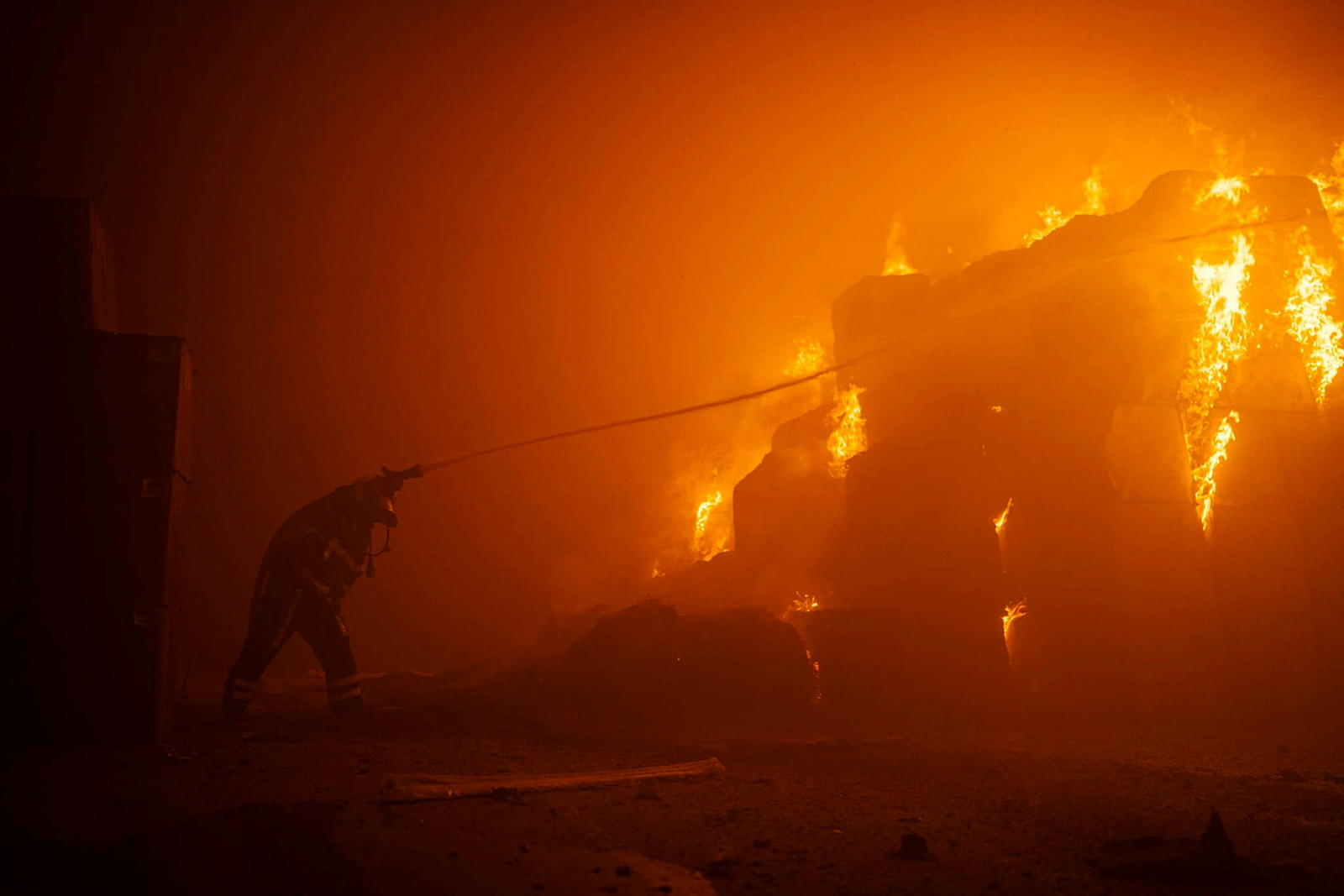
For the 14th day this month, the city of Kyiv has been the target of Russian aerial attacks.
Ukrainian officials estimate Russia sent more than 50 attack drones toward the capital city early Sunday. The overwhelming majority were destroyed by air defenses, and casualties and damage appear to have been minimal, according to city authorities.
So why does Russia expend so much effort for such limited returns?
Low-cost assault: First, the Iranian-made Shahed drones are a cheap way to inflict at least some pain on Kyiv, which for much of the last year has been spared the impact of the Russian invasion. Russia has bought many hundreds of such drones, which cost roughly 20 times less than a missile.
This pain is as much psychological as physical: The nighttime attacks send thousands to shelters and basements. Windows are shattered, wreckage falls on the streets. Since the beginning of the invasion, the air raid siren has been on in Kyiv for a cumulative 887 hours. The nearest historical parallel might be the Nazis’ use of the V2 "doodlebug" cruise missiles against London at the end of WWII.
The overnight attacks came as the Ukrainian capital was preparing to celebrate Kyiv Day, marking the city's foundation more than 1,500 years ago. That is probably not coincidental.
However, all indications are that — despite the dislocation and exhaustion — the attitude of the city's population is hardened rather than weakened by such attacks.
Chipping away at defenses: The greater purpose on the Russians' part in sending waves of Shaheds is likely to wear down Ukraine's air defenses and force them to expend scarce munitions on the swarms of drones.
Multiple accounts over the past few months, including estimates in leaked US military assessments, have referred to critical shortcomings in Ukraine's layered air defenses, especially as its Soviet-era S-300 system — the workhorse of Ukrainian air defenses — is degraded and it becomes increasingly difficult to find ammunition for such systems.
Iran will face consequences after Kyiv was targeted with Iranian drones, Ukrainian official warns
From CNN's Olga Voitovych
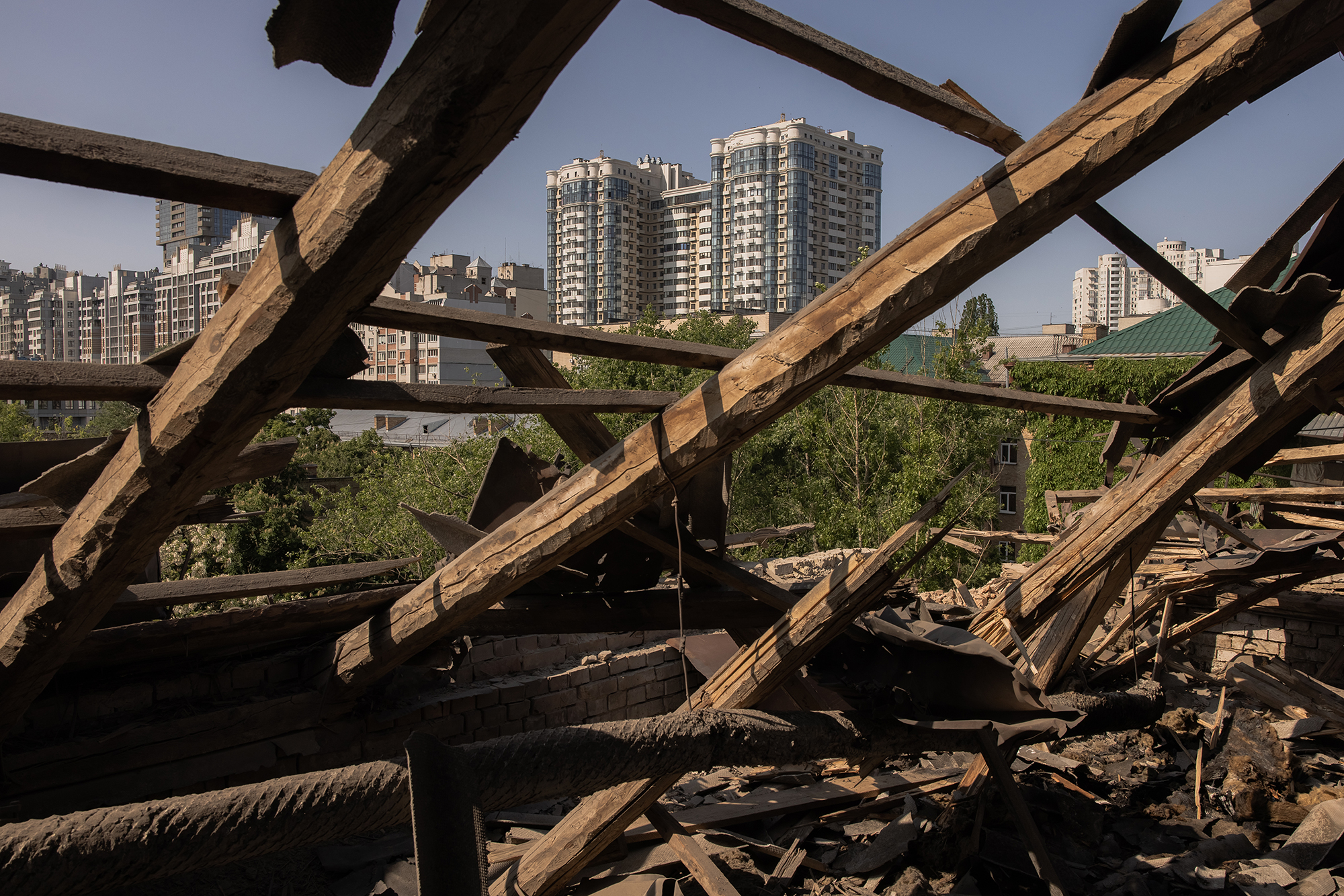
A top Ukrainian government official warned Iran there will be “consequences” after the capital Kyiv was targeted with Iranian Shahed drones overnight.
“Tehran has become a key ally of Moscow in this war, deliberately supplying it with weapons for attacks on civilian cities," Mykhailo Podolyak, the adviser to the head of the Office of the President of Ukraine, said on Twitter.
"Tonight's attack on Kyiv with 50 Shaheds on City Day is another eloquent confirmation of this truth," the adviser said, referencing an annual holiday celebrating the capital. "In legal terms: Iran is doing this with direct intent and realizing the consequences of its actions. And there will definitely be consequences."
"Today, I would like to remind official Tehran of the basic laws of life, in particular the law of the boomerang. Do not be confused by the illusion of geographical remoteness or a misunderstanding of Ukraine's priorities today. Once released, Shahed will definitely find its way to its manufacturer one day," Podolyak warned.
Threat of sanctions: Podolyak said Ukrainian President Volodymyr Zelensky would propose to the government sanctions on Iran for 50 years.
The head of the Office of the President of Ukraine, Andriy Yermak, specified the sanctions proposed would include trade, financial and technological restrictions on Iranians, barring Iranian shipments and flights through Ukrainian territory, and a ban on Iranian citizens from withdrawing funds from Ukraine.
Moscow and Tehran: Relations between Tehran and Moscow have grown much closer during Russia's full-scale invasion of Ukraine. Russia wants Iranian drones and ballistic missiles; Iran wants Russian investment and trade. Russia has become the largest foreign investor in Iran over the past year, according to Iranian officials.
About the attack drones: Shahed-series drones – the Shahed-129 and Shahed-191 – are unmanned aerial vehicles capable of carrying precision guided munitions, and can also be used for surveillance.
Iran appears to be modifying the drones so that their explosive warheads can inflict maximum damage on infrastructure targets inside Ukraine, according to an investigative report obtained exclusively by CNN.
CNN's Tim Lister and Natasha Bertrand contributed to this report.
Zelensky hails Ukrainian air defenses as heroes following Kyiv drone attacks
From CNN’s Niamh Kennedy in London
Ukrainian President Volodymyr Zelensky hailed Ukrainian air defenses as “heroes” Sunday following a barrage of drone attacks on Kyiv overnight.
In a post on his official Telegram channel on Sunday, Zelensky highlighted the work of the Air Defenses of Ukraine, who he said, “hear the air raid alarm differently than most people.”
“You look up to destroy enemy missiles, aircraft, helicopters, and drones. Every time you shoot down enemy drones and missiles, lives are saved,” the president said.
“You are our heroes,” Zelensky continued.
On Sunday, Ukrainian air defenses said they had succeeded in downing 52 out of the 54 Iranian Shahed drones launched by Russia. In the capital, Kyiv, the defenses managed to shoot down 40 drones, according to the city’s military administration officials.
As CNN has previously reported, Ukraine's air defense are vastly improved from the time before Russia's full-scale invasion, though they are still developing.
Ukraine’s air defenses are better than ever, but Dnipro devastation shows they’re not perfect
From CNN's Vasco Cotovio, Frederik Pleitgen, William Bonnett and Svitlana Vlasova
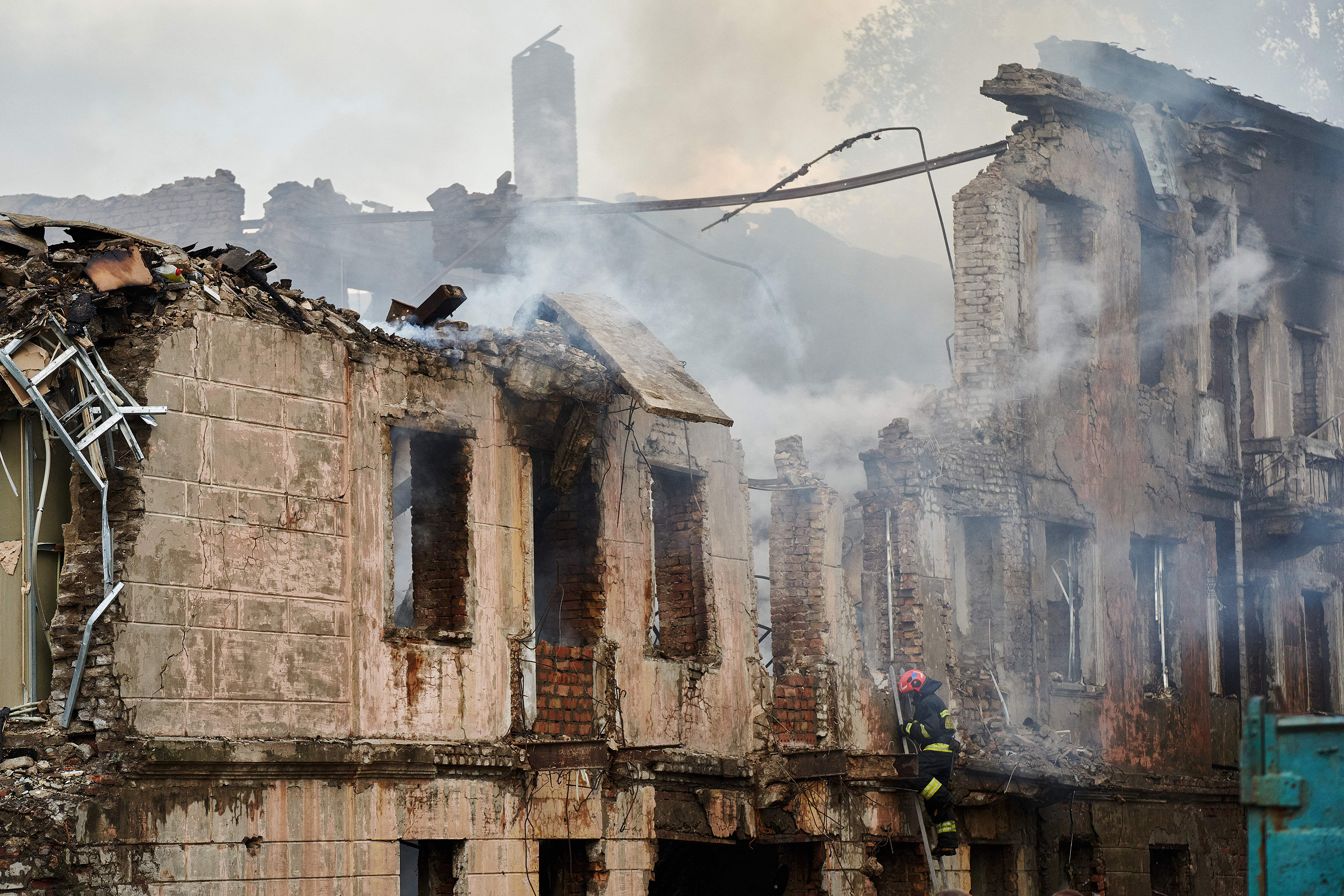
Because of Western donations, Ukraine now fields a multi-layered air defense network capable of hitting short, medium and long range targets.
Kyiv's arsenal includes the Franco-Italian SAMP/T, German Iris-T and Gepard, as well as the American NASAMS and Patriot air defense systems, among others. All of these are kept under even more secrecy, in undisclosed locations away from prying eyes, to avoid targeting by Russian forces.
And the results are on display, with Russian missile and drone strikes inflicting less and less damage.
Still, some drones and missiles do break through Ukraine’s anti-aircraft defenses.
Sometimes their impact is minimal, but sometimes it is devastating, such as Friday’s deadly strike in the city of Dnipro.
“S-300 or S-400 anti-aircraft guided missiles, this is the type of weapon the occupiers often use attacking the frontline areas. Presumably, it was these types of rockets that struck civilian objects (in Dnipro),” Yurii Inhat, spokesman for Ukraine’s Air Force command, said after the strike.
A top general stirred more speculation about Ukraine's counteroffensive. Here's what to know
From CNN's Olga Voitovych, Andrew Carey and Nick Paton Walsh
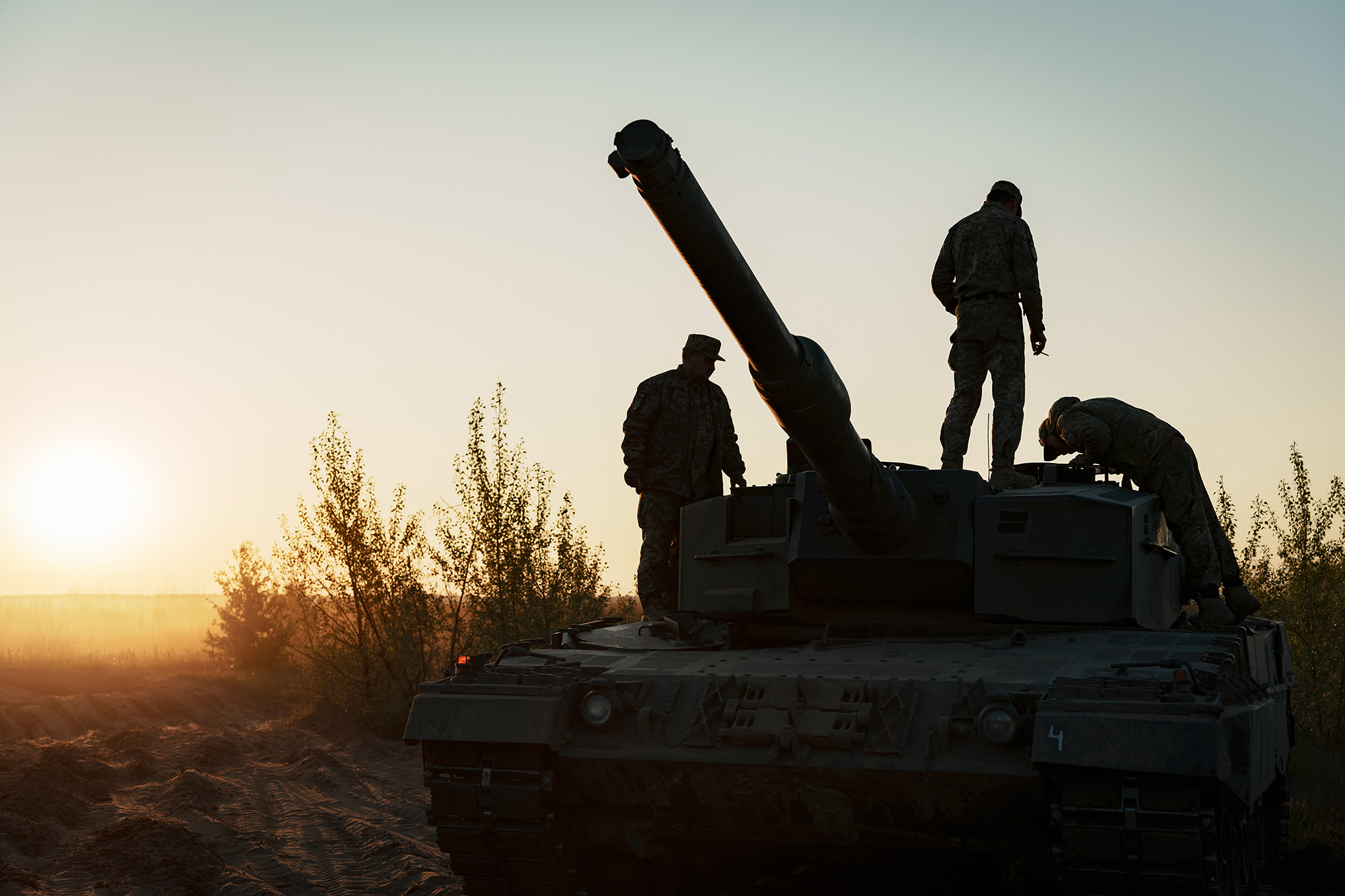
With just a few words and a slickly produced piece of military propaganda, the commander in chief of Ukraine’s armed forces ratcheted up speculation Saturday that a long-awaited counteroffensive could be imminent.
“The time has come to take back what is ours,” said the official, Gen. Valerii Zaluzhyni, sharing a clip of Ukrainian troops marching, training and apparently preparing for battle.
The video came online following weeks of speculation regarding when Ukraine would start its counteroffensive — or whether it might have already begun.
Despite its language, Zaluzhyni’s post made no explicit mention of an impending military operation, and there have been few details reported on the ground of specific build-ups of troops and weapons — though it should be noted that any such reporting would likely fall foul of Ukraine’s martial law restrictions.
Information wars: Both Russia and Ukraine have been known to engage in disinformation campaigns to confuse enemy forces.
Ukrainian officials are keeping details of the operation under wraps, including whether or not it has already begun. That is likely an attempt to confuse the Russian military.
There are also public relations factors at play. Declare the counteroffensive underway, and the clock ticks immediately for the first results. Avoid doing so, and any mounting losses Russia sustains are just considered part of normal frontline attrition.
Russia taking fire: The Ukrainian military has been spotted moving military hardware toward the front lines and carrying out attacks against Russian targets that could facilitate an offensive, including strikes on Thursday and Saturday in the Russian-occupied southern port city of Berdiansk.
The Kremlin said Saturday that, in the past 24 hours, its forces had shot down 12 Ukrainian drones flying over Donetsk, Luhansk and Zaporizhzhia, a trio of Ukrainian territories that are all part-occupied by Russian forces.
Also on Saturday, explosions hit the Russian-occupied city of Mariupol, and attacks on Russian soil killed one person in Belgorod, targeted a pipeline and killed a construction worker near the border, according to Russian authorities.
A senior US official confirmed to CNN earlier this month that Ukraine has begun conducting “shaping” operations, striking strategic targets to shape the battlefield in favor of Kyiv’s advancing forces. Shaping is a standard tactic used prior to major combined operations, but it can also be used simply to confuse the enemy.
European allies still with us on Ukraine’s territorial integrity, says Ukraine's Kuleba
From Andrew Carey, Yulia Kesaieva, Olga Voitovych and Darya Tarasova
Ukraine’s foreign minister says the country’s European allies remain in lockstep with Kyiv over the war, amid reports that Chinese envoy Li Hui, who has been visiting European capitals, is urging acceptance of Russia’s territorial gains as a way to end the fighting.
Western interlocuters of the Chinese diplomat on his recent visit – which took in Kyiv, Warsaw, Berlin, Paris, Brussels and Moscow – were told to put pressure on Ukraine and force it to make compromises on territory, according to the Wall Street Journal.
But in a video message on his Facebook page, Dmytro Kuleba said western partners had assured him that no such moves had been entertained in discussions with the Chinese envoy.
“I immediately contacted my colleagues in the capitals [Li] visited, and all of them confirmed there had been no talks or negotiations about recognizing as Russia those territories [it currently controls] in Ukraine,” Kuleba said.
“No one will do anything against us behind Ukraine's back, because we have built trusting relationships with all our key partners,” he added.
Beijing is a key ally of Moscow, particularly in economic ties, but has been careful to maintain a degree of distance over Russia’s actions in Ukraine.
In February, China published a series of principles it said should form the basis for ending the war, including rapid resumption of direct dialogue between the parties and a comprehensive ceasefire.
However, the 12-point paper made no mention of possible Ukrainian concessions, instead stipulating: “The sovereignty, independence and territorial integrity of all countries must be effectively upheld."
In his video message, Kuleba said Ukraine would continue its dialogue with China but reiterated his country’s long-standing position there would be no discussion of territorial concession, nor of putting the conflict into a ‘freeze.’
Russia’s Foreign Minister Sergey Lavrov, who met with Li in Moscow on Friday, said China had a “balanced position” on the war, and welcomed “Beijing’s readiness to play a positive role in its settlement,” according to a statement on the Russian Foreign Ministry website.


